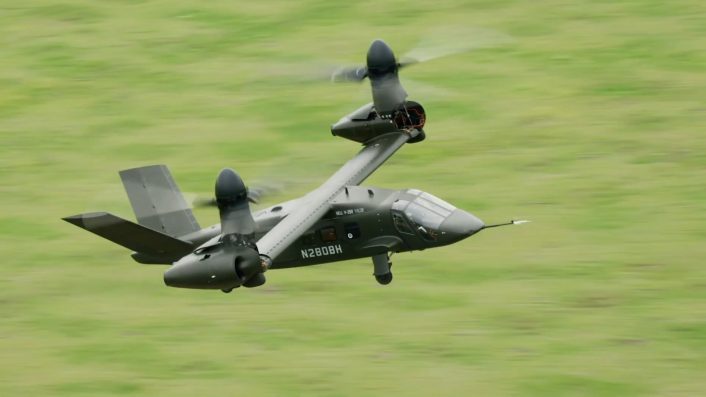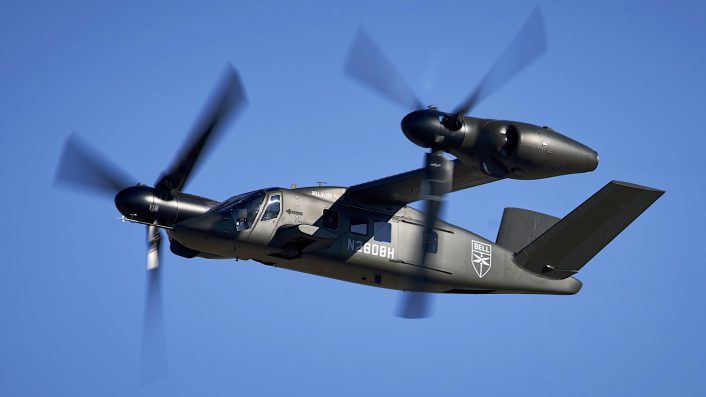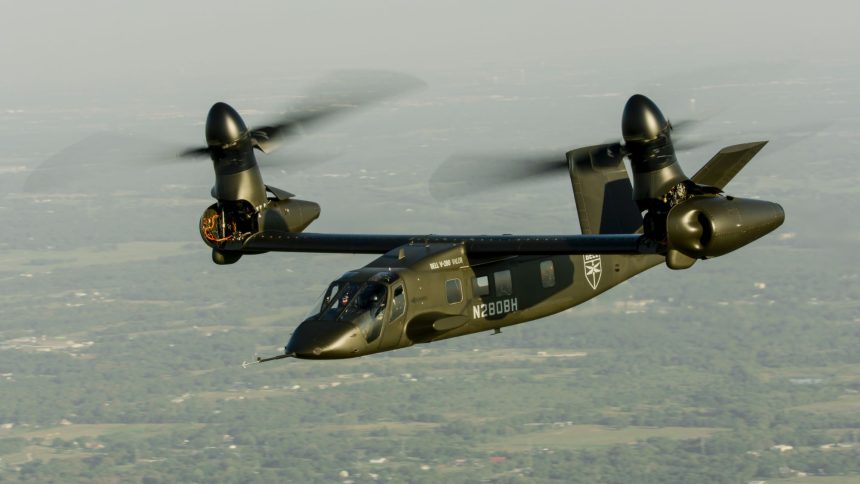Coordinating with Bell, the Army made extensive efforts on supply chain, production and training to mitigate risks should it go into low-rate production concurrently with prototype testing.
The U.S. Army shed more light on its plans to advance the induction of the first MV-75 FLRAA (Future Long-Range Assault Aircraft) beginning in 2027, and is thus exploring a production decision ahead of operational testing. Senior Army leaders took part in the ‘State of Future Vertical Lift’ hosted by Defense News on the sidelines of the AUSA (Association of the United States Army) Symposium on Oct. 13, 2025, and answered the questions of correspondent Jen Judson.
The officials gave specifics of the efforts on the supply chain end with the hundreds of aerospace vendors, a possible “risk” to temporarily “defer” certain capabilities on the MV-75 to enable early operationalization, and arrangements with Bell on how the company would address issues which could emerge should a limited series production happens parallel to development. That production call, known as Milestone C, is usually taken after Developmental Testing and is followed by Operational Test and Evaluation (OT&E) campaigns.
Col. Jeffrey Poquette, Project Manager for the FLRAA, explained that the service is planning Milestone C for the MV-75 alongside developmental testing, and then followed by operational testing. The Army intends to complete its Critical Design Review (CDR) phase in 2026, receive its first prototype by FY27 and go into production by FY28.
The #MV75 #FLRAA program is moving faster than ever. By building prototypes and immediately transitioning to production, Bell, the @USArmy, and #TEAMFLRAA are accelerating timelines.
Watch the full video: https://t.co/HIyO0COSLf#MV75 #FLRAA #TiltrotorTechnology… pic.twitter.com/eolN7ypx3e
— Bell (@BellFlight) October 7, 2025
In June 2024, the program reached the milestone B stage, followed by the Army accepting virtual prototypes in June 2025. Prior to that, in April 2025, the MV-75 virtual prototype underwent the third Special User Evaluation (SUE) trials at the Redstone Arsenal, Alabama.
Supply chain preparations for the early production decision
Other Army senior leaders in the panel included commander of the Army Aviation Center of Excellence Maj. Gen. Clair Gill; Director, Future Vertical Lift Cross-Functional Team Brig. Gen. Cain Baker; and Program Executive Officer, Aviation, Brig. Gen. David Phillips.
The officials explained that, in order to make that possible early Milestone C call, the Army and Bell held exhaustive interactions with the supply base, releasing engineering drawings and purchase orders. The unconventional approach represents a major departure from the standard procurement route that had seen program delays and cost overruns, owing to planning shortfalls and, in particular, the ‘right to repair’.
Poquette said they got Bell to agree to this as a “non-negotiable” requirement from the outset. This stems from the aftermath of the F-35 program that former Secretary of the Air Force Frank Kendall termed as an “acquisition malpractice”.

Poquette said during the AUSA interaction that they boiled down with Bell the bare minimum requirements the Army needs and Bell can provide if an advance production is taken. “We went to Bell and said what can we risk in to go faster, but not get rid of all the goodness that we consider to be the cornerstones in the program). One was right to repair. That for us was non-negotiable,” said Poquette.
Another issue was represented by the “artefacts” that the Army needed but “could defer” receiving. Poquette said that, over the last four months, “over 3,000” engineering drawings, accounting for over 90% of the schematics of the entire MV-75 aircraft, have been released, while 5,000 purchase orders have been placed across the supply base of over 360 vendors.
While Bell builds the fuselage, the other companies manufacture the castings, forgings and bearings. “So that’s real movement on the program,” Poquette explained, describing the efforts on the core industrial and manufacturing side to drive down the supply chain risks.
Tomorrow at #AUSA2025: The State of Vertical Lift panel discussion. Hear defense leaders discuss how Future Vertical Lift is advancing @USArmy aviation to dominate in contested environments.
📍Room 204 AB | ⏰ 7:30–8:30 a.m.
In-person and livestream options are available,… pic.twitter.com/u8UZ29s74A
— Bell (@BellFlight) October 12, 2025
‘Testing, production and then operational test’
Poquette then tied the ongoing effort to the possibly advanced Milestone C decision:
“When you’re building prototypes and when you go to test […] what would the risks be? (So the risks would be) you’d find things wrong in tests. So we’ve come to some agreements in the executive level and said ‘here’s the pricing we want to do. And here’s what we need you to do once we build aircraft, if they’re not where they need to be, what are you going to do to get them fielded?’ So we have all that in place. And that’s how we’ve burned down that risk. Some programs have done Developmental Test and Operational Test at the same time. We’re not doing that.”
Unmatched Speed. Exceptional Agility. Maneuverability.
Learn more about the MV-75 FLRAA: https://t.co/LQzkZ2Zks3#MV75 #FLRAA #ArmyModernization #TiltRotorTechnology pic.twitter.com/BYeM5PoG6b
— Bell (@BellFlight) October 10, 2025
So the plan for the Army, as Poquette put it, is this: “Developmental test, production alongside and then operational test when the risk authority is comfortable putting that aircraft in the air with operators.” Another factor that contributed in mitigating the risk was that the V-280 Valor was a technology demonstrator, itself developed with digital engineering and modelling tools, and had flown for over 200 hours.
On the training end, U.S. Army aviators at Fort Rucker, Alabama, are also gaining hands-on experience with tiltrotor technology through a U.S. Marine Corps’ MV-22 Osprey of the Marine Medium Tiltrotor Training Squadron 204 (VMMT-204), deployed there in August.
The Army has currently contracted Bell to produce eight MV-75 prototypes. With the bare minimum deliverables with Bell boiled down, an early production decision will also be taken on the basis of how the first prototypes perform. “Is it more than just coming off the ground and down, can it go do a traffic pattern, can it transition its rotors and tilt them, is the software pretty good? If all that happens, then the Army […] can make an early production decision and […] accept a risk [that the aircraft won’t be perfect] but will be valuable to the operator,” Poquette explained.

Deliveries and fleet
The FY28 production decision, should it happen, would deliver a Company of MV-75s much earlier, which would then go into Operational Testing. This translates into a Battalion of 24 aircraft 18 months earlier than planned, followed by Brigade-level fleet 30 months ahead.









